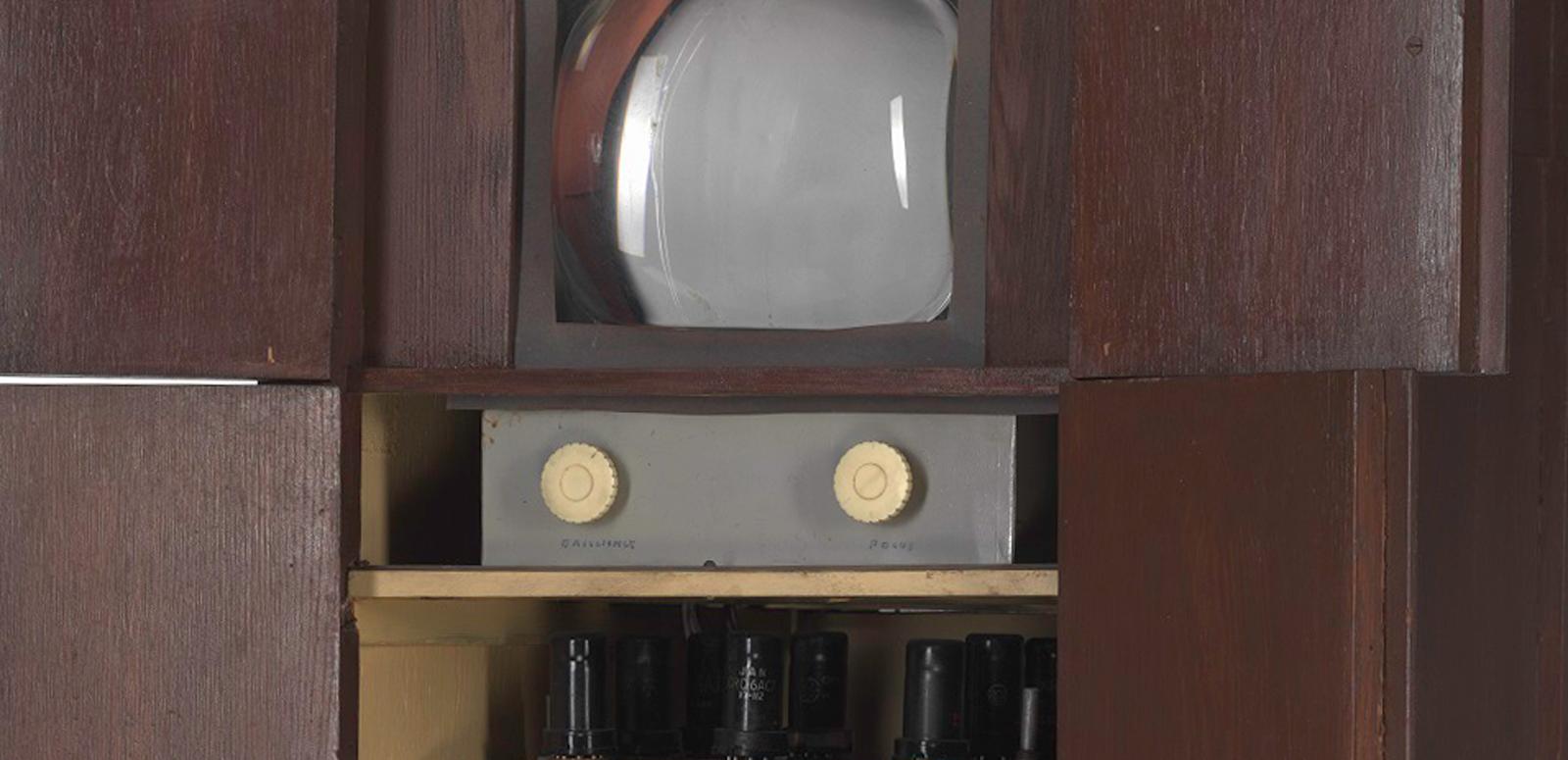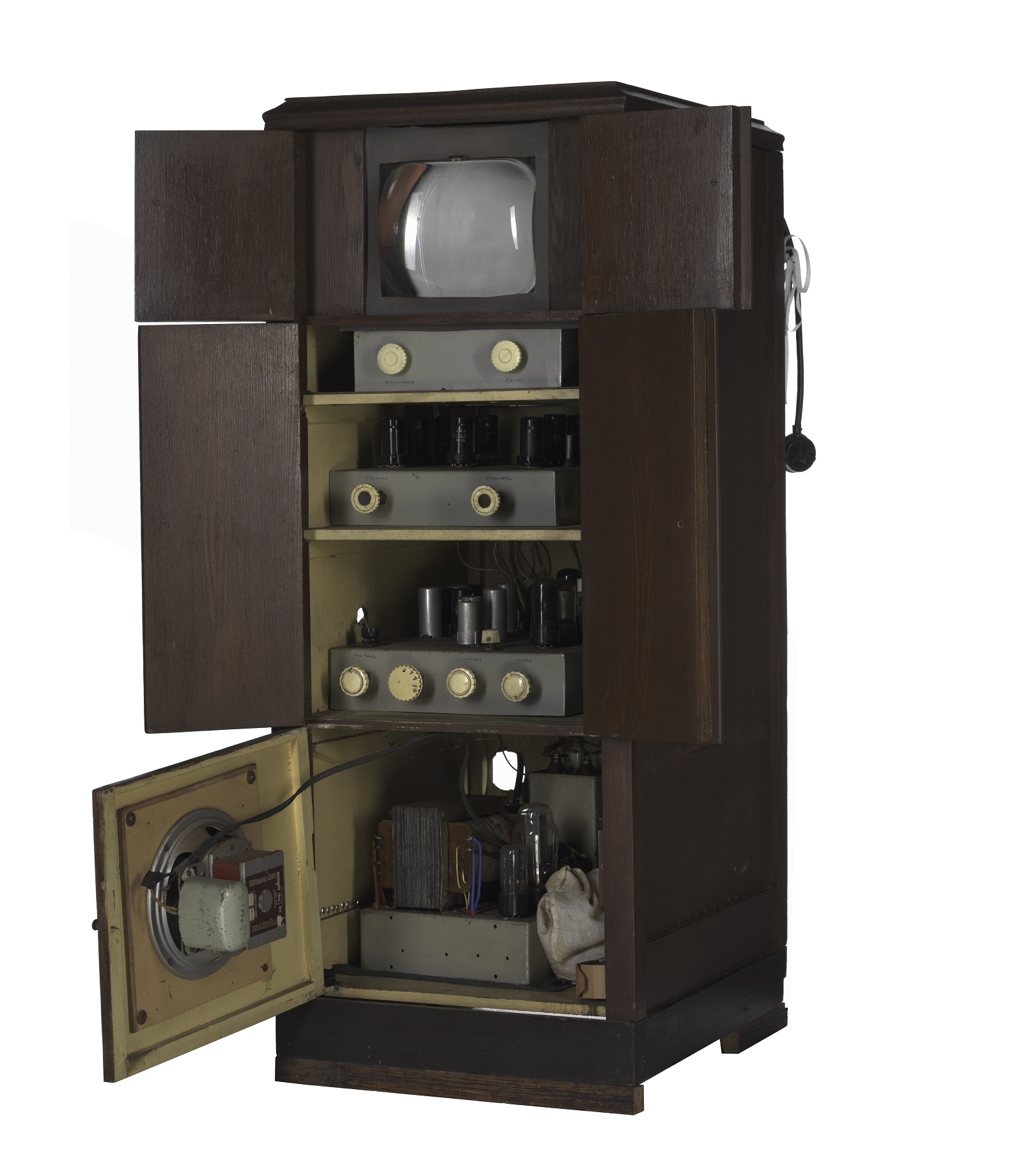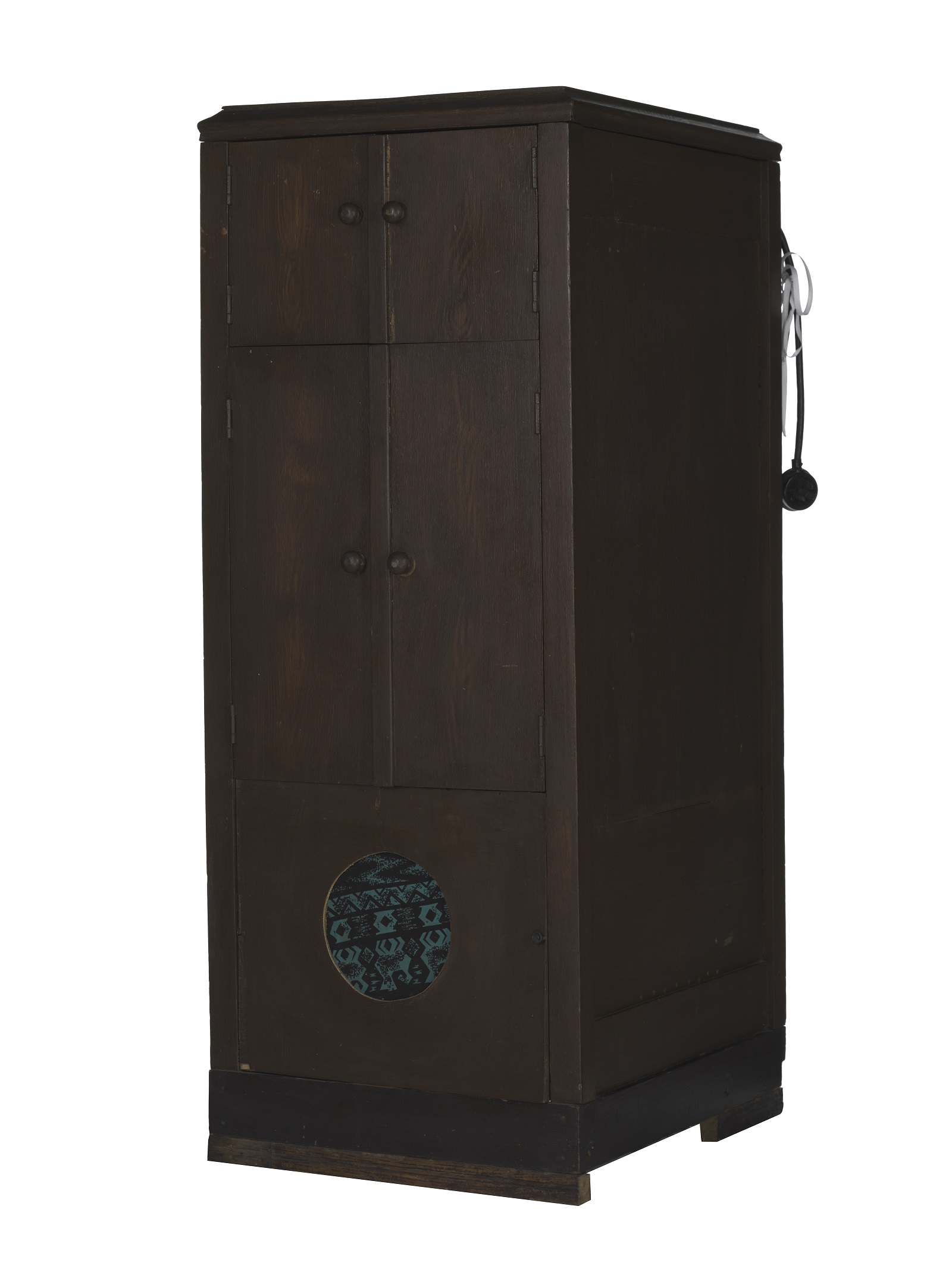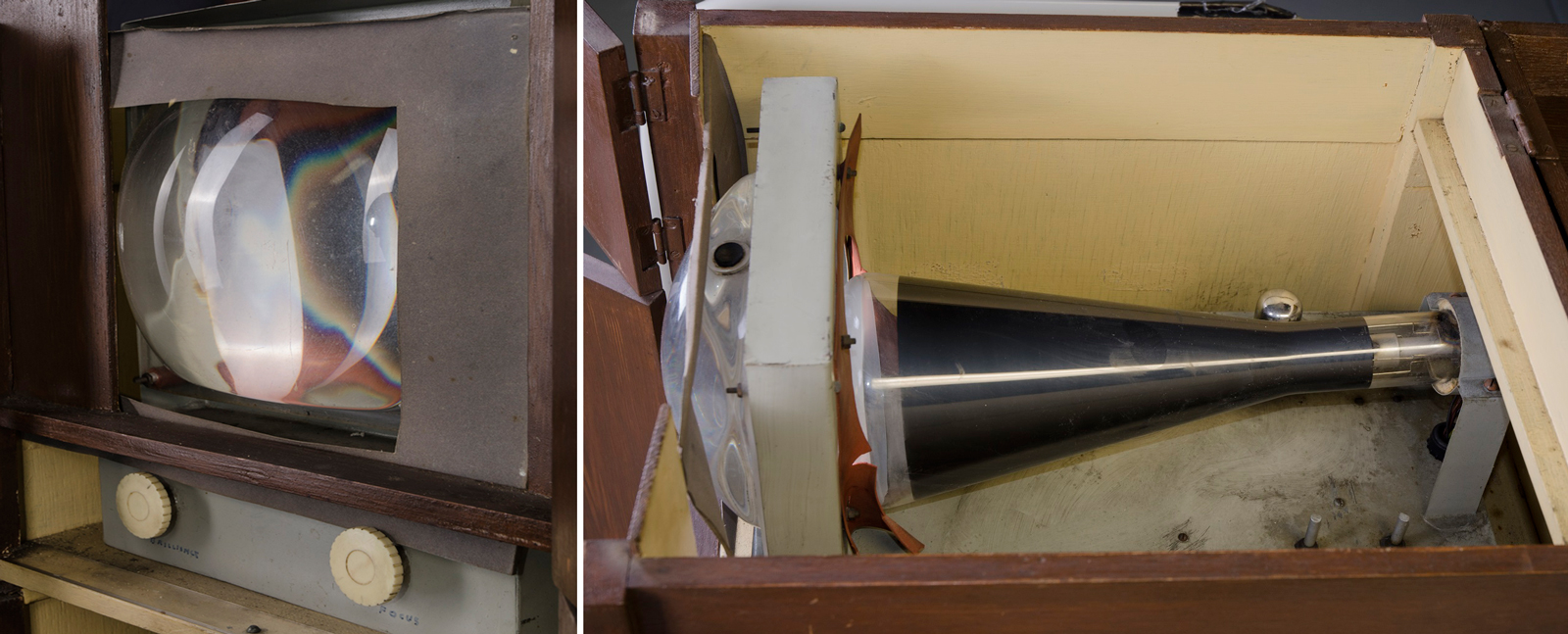

A homemade TV
Story of a homemade TV
Did you know that in TV’s early days, a number of talented people built their own TV sets at home?

Sid Oldroyd’s homemade TV.NFSA title: 1478597
At the time there was a large number of (mostly) men who loved tinkering and the challenge of new technologies. For them, moving on from crystal radios to building TV sets was probably a natural evolution.
The fact that instructions for the construction of a black-and-white 21-inch set were published in several editions of Radio, Television and Hobbiesmagazine is testament to this.
Of course, these technology enthusiasts might have saved some money on the actual TV set, but they still had to pay the cost of the antenna and the licence!
Sid Oldroyd
One of those inventors was Sidney John Oldroyd (1917-2008), and we have one of his creations (still in working condition!) in the NFSA collection.
This device was built in 1956, when test transmissions were in full swing before the commencement of officially approved regular broadcasting by TCN9 Sydney on 16 September.
Sid’s TV features a small green screen and easily accessible slide-out component trays, all housed in a purpose-built wooden cabinet.
We asked Sid’s daughter, Margaret Ruting, to share her father’s story:
"Sidney John Oldroyd was born in 1917 in London, during the First World War. His father was a proficient compositor and monotype operator in the printing trade. The Oldroyd family lived and worked in Ireland, London, Manchester, Cairo and Pretoria and eventually Australia, arriving in Sydney when Sid was 11 years old.
During the next few years, the Oldroyds moved many times, finally buying their own printing business in Redfern. Sid left school just before his 14th birthday as he was required to work in the printing shop. He always had a very keen interest in electronics and, as a teenager, he built himself a crystal set.

The TV in its cabinet.NFSA title: 1478597
When the Second World War started Sid was called up for full-time Army service and allotted to the 11th Supply, in Darwin, from December 1941 to January 1946. His 25th birthday on 19 February 1942 was memorable, as it coincided with the bombing of Darwin! It was followed by bombing attacks about twice a week for the following weeks, amounting to around 60 attacks over the next couple of years.
In 1943 Sid was promoted to Lance Corporal and in his spare time he started a correspondence course in electrical wiring, which helped enable him to install electric lights, three phase motors and switchboards in the buildings he erected for the army. He was then promoted to Corporal.
When the war ended, Sidney applied unsuccessfully for an electrical trades course. Sadly, he was unable to find employment in other electrical and radio firms, who were all reducing staff after the war. Sidney, now 29 years old, was determined not to return to his father’s printing business, so he took the only employment available at the time: as a painter with the Australian Gas Light Company in Mortlake. He’d saved nearly all his army pay over those years and, with a new wife, they purchased their own home. Sid then built himself a shed, where his dreams of making radios finally came true.
Television had been operating in England and the United States, and there was talk of introducing it into Australia. The expected price of a new set was £800, so Sid started assembling some of his ex-service radio bits and pieces. By the time the first transmission started in September 1956, Sid had a receiver working, using a five-inch, ex-radar tube.

It was amazing how many visitors popped in once word got around that there was a television, probably the first, in their suburb of Concord.
Often complete strangers came to the door and were always invited in to experience a broadcast.
Sid enjoyed his 31 years in employment, but what he enjoyed most was precious time spent in his shed, fixing radios and televisions for friends and family, and making electronic devices like organs, ham radios, televisions, intercoms … you name it!
His wife Effie, even after 54 years of happy marriage, always consoled herself by saying, ‘Oh well, I know where to find him … in his shed, playing with his radio bits and pieces’."
The National Film and Sound Archive of Australia acknowledges Australia’s Aboriginal and Torres Strait Islander peoples as the Traditional Custodians of the land on which we work and live and gives respect to their Elders both past and present.